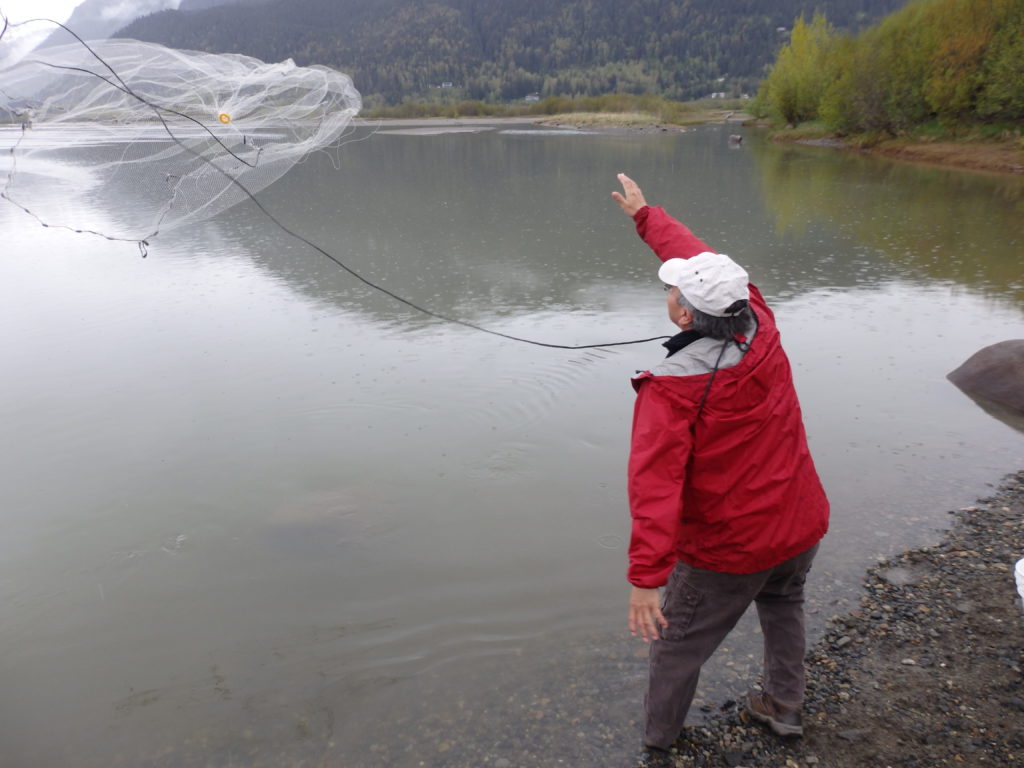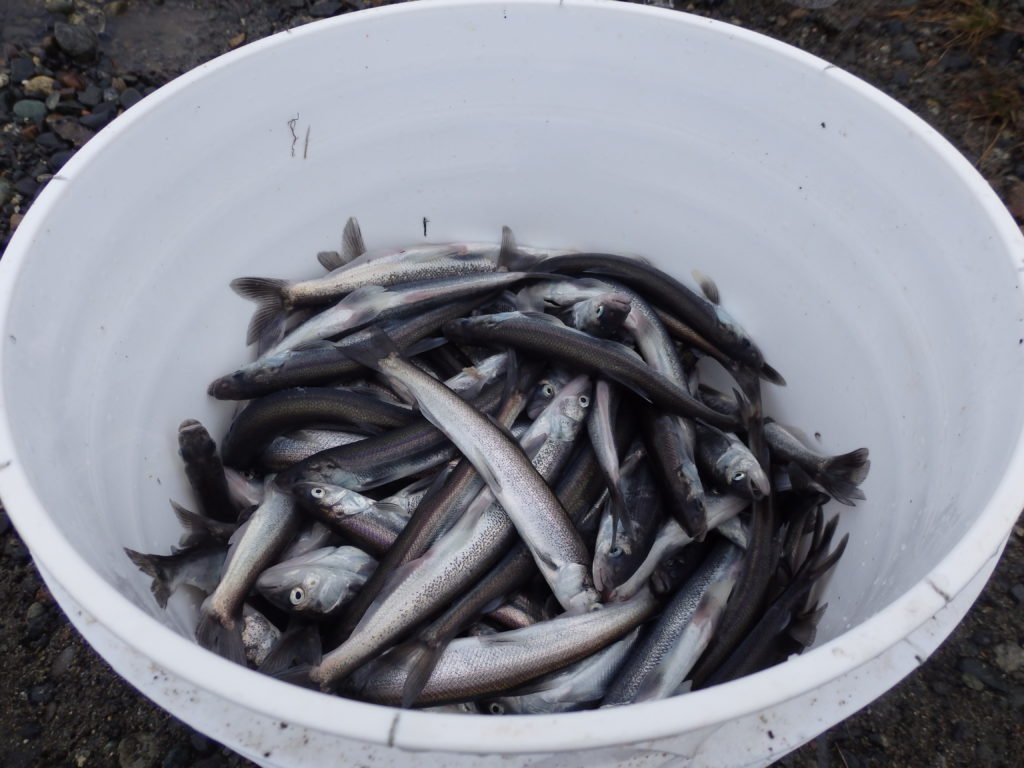The hooligan are back. After last year’s disappointing runs in the Chilkoot and Chilkat rivers, Haines and Klukwan subsistence fishermen are excited that this spring’s return has been abundant. Area biologists don’t know why the runs fluctuate so much. But they’re trying to bolster research to understand the traditionally important fish a little better.

To find out whether the hooligan are running, all you have to do is listen. The hooligan (also known as eulachon) don’t make any noise, but the thousands of gulls and other birds feeding on them do.
Sonny Williams trekked out to Jones Point Tuesday morning to pick up a bucket left behind by a friend.
“Does anybody know if there’s a bucket down there with a net in it?”
Williams says he’s already caught his fill of fish from the Chilkoot River. But as we walk along the bank and he sees the dark streaks in the water that show where the hooligan are, he can’t help himself. He goes to his truck to get a throw net and brings it back next to another fisherman, Vince Hotch.
“You ready Vince?” Williams asks, and then throws his net in the water. He reels it in, and it’s full of wriggling, little silver fish.
Williams doesn’t just catch, smoke and make oil with the fish. He also keeps data on them: when the run begins, how long it lasts in the Chilkoot and Chilkat. He started doing it because no one else was.
“It’s just pretty awesome to see a giant run like this, because that means four years from now probably there’ll be another big run,” Williams said. “I can’t say though really because there’s nobody that studies them. So I decided to keep track of it.”

“They’re such interesting fish, they always keep you on your toes,” said Meredith Pochardt,with the Takshanuk Watershed Council.
The watershed council is the only group that formally studies the local hooligan run, and they only have about six years of data for the Chilkoot River and none for the Chilkat.
“It’s better than nothing, but it’s not that long of data set and it’s only one river.”
Pochardt says the purpose of their catch and release study on the Chilkoot is to get baseline data.
“Hooligan are a little different than salmon. Because hooligan aren’t tied to one river, they don’t necessarily go back to one natal stream to spawn. They’re more opportunistic and they’ll kind of pick a river in a region. So the same population that spawns in the Chilkat or Chilkoot, could spawn in the Ferebee or the Taiya or the Katzehin or Berners Bay.”
That seems to be what happened last year. The hooligan run was super low on the Chilkoot, only about 300,000, according to Pochardt. This year it’s up around 1.8 million. But in the Taiya River up by Skagway last year, people said it was the biggest run they had ever seen. The theory is that some unknown environmental trigger caused the hooligan to go towards the Taiya instead of the Chilkoot.
Now, Skagway is going to start to get some numbers on the hooligan run in the Taiya.
“We’re basically trying to get some baseline information about hooligan to understand when the waters are most vulnerable to activities that might affect spawning,” said National Park Service biologist Jami Belt. NPS is starting a hooligan study on the Taiya.
“The arrival of the hooligan breaks the fast for the birds and sea mammals that are getting ready for their breeding season,” Belt said. “We’ve had all kinds of activity from river otters…so it’s just a really good indicator species for us of how things are functioning in that ecosystem.”
Skagway fisherman say this year’s hooligan run seemed strong but brief. Soon, the Park Service will have numbers to compare to the anecdotes.

Back at the Chilkat, Williams takes out some of the hooligan he caught a few days ago and smoked.
“I usually try to have one a day. It’s like an apple a day, I try to eat one hooligan a day,” Williams says.
He hopes next spring, the mysterious little fish will swim back to the Chilkat and Chilkoot so he can stock up for another year.
Emily Files is a reporter at KHNS in Haines.




